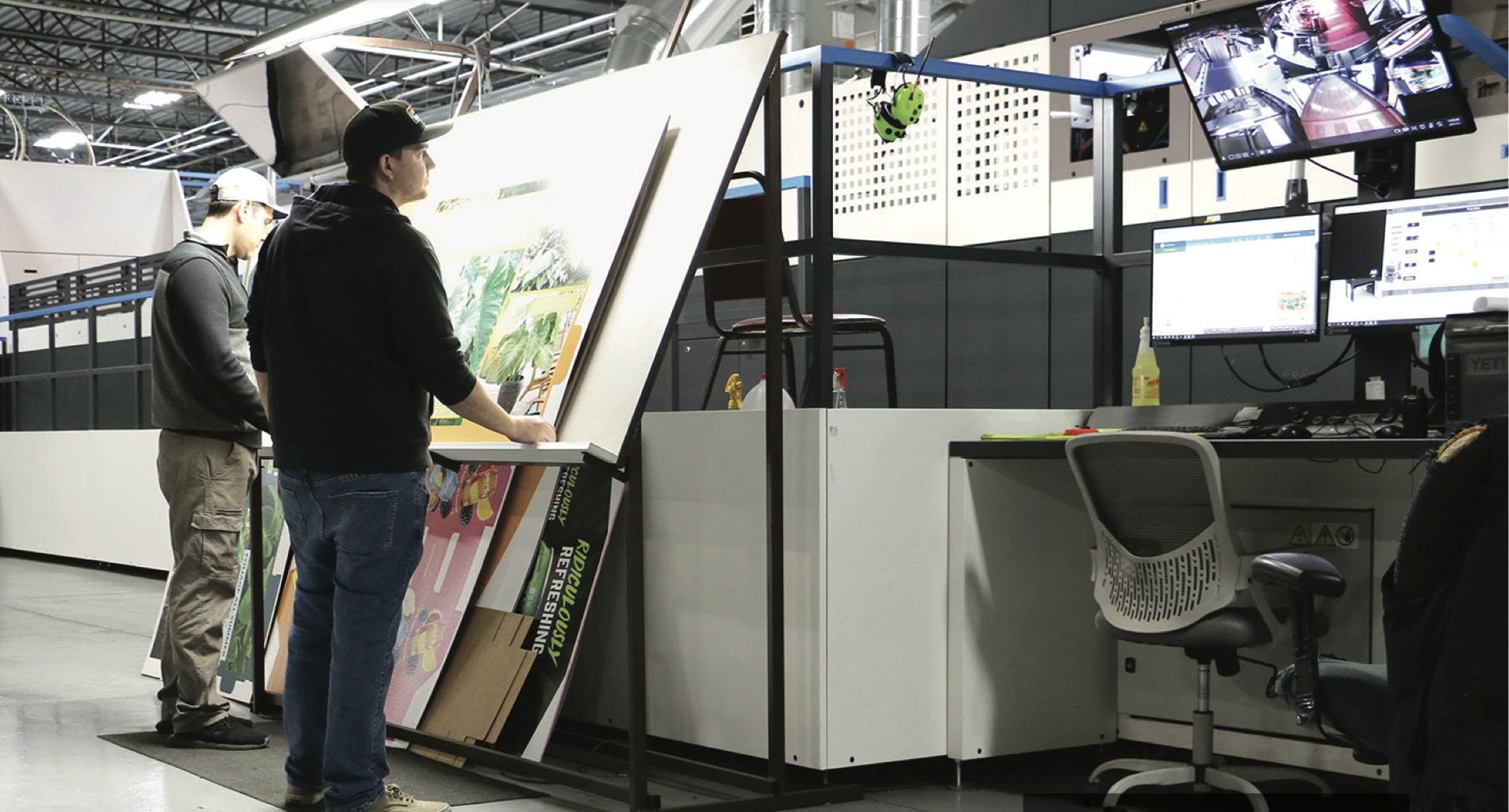The Evolution of Digital Printing in Corrugated Applications
- Published: March 21, 2024
A New Era of Possibilities
By Manny De Barros, Chief Revenue Officer, Sutherland Packaging
In 2007, I got my first iPhone. It was shiny, flashy... a bit slow, and more than a bit clunky. It was an eye-catching, conceptually amazing device that, when put into day-to-day operation, left a lot to be desired.
More than 15 years and numerous iPhone iterations later, the pocket-sized, high-powered computers we now carry are light years ahead of their not-so-ancient predecessors. Love ’em or loathe ’em, smartphones illustrate the astonishingly rapid evolution of perhaps the most significant tech innovation of the 21st Century to date.
When it comes to printing, a direct correlation can be drawn to digital presses. When it first debuted, digital printing was a prospective game changer that, according to critics, wasn’t quite ready for prime time. Most glaringly, early digital printing was too sluggish and its inadequate color matching compared unfavorably to traditional flexographic presses.
Yet, amidst these drawbacks, promising advantages emerged. The potential for automated setup held the possibility of significantly reducing downtime and introduced the prospect of producing runs with versioned or even customized per-item prints – for example, mosaic printing. Simply put, digital was more flexible than flexo but needed to gain ground in other critical areas.
Today, although there’s always room for improvement, significant progress has been made that, for corrugated printers, digital presses offer far more enhanced capabilities than they once did. This is evident in the numbers. According to reports, the global digital printing market is estimated at USD $26.3 billion in 20221 and is project-
ed to approach or even surpass USD $51.5 billion by 2032. These projections suggest rapid, steady annual upticks, with forecasts suggesting a CAGR (Compound Annual Growth Rate) of 7 percent now through 2032.
Some context: My company, Sutherland Packaging of Andover, NJ, recently invested in an HP Pagewide C550 Digital Press, the first of its kind in the U.S. The newest generation of HP’s single-pass digital press showcases the strides made in digital printing technology. It features razor-sharp, offset-quality printing in more than 16,000 vibrant colors at speeds comparable to conventional presses. Plus, it offers infinite marketing flexibility via litho-replacement print quality, dramatically enhanced speed to market and the elimination of expensive printing plates.
Like any digital press, the biggest benefit is versatility and drastically reduced make-ready times, the latter trait leading to fast turnaround. But unlike its not-so-distant ancestors, its graphics are strikingly similar to litho while averaging speeds of 2,400 sheets per hour. Print quality is enhanced with the HP C550’s “litho replacement” registration and ultra-fine detail down to 4 point font, made possible by an impressive one million printing nozzles per pass.
This is just one example of technological advancements that, for digital printing, has raised the ceiling for profitable production. We’re now finding that we can produce over 10,000 items before it starts to make more economic sense to use traditional flexo equipment. That’s a big jump from yesteryear – and an ample amount of capacity given we’re generally making large-format items like snack towers, case wraps and pallet skirts.
Color matching has also undergone a remarkable transformation since the early days of digital infancy. Most notably is the advent of Expanded Gamut Printing for digital presses. Incorporating up to seven colors, the exacting process adds orange, violet and green to the original CMYK (cyan, magenta, yellow, and key/ black) color set. The additional hues allow printers to match upwards of 97 percent of Pantone colors to the naked eye.
That’s a high mark – especially when grading on recent history’s sloped curve with regards to digital color matching. It’s also important given the noted challenges of direct-to-corrugated printing, such as blurriness and banding. Corrugated printing is challenging enough without compounding longstanding obstacles with additional deficiencies.
And of course, digital’s original benefits are still as valuable as ever. Minimal make-ready means you can run only what is needed, greatly reducing excess inventory waiting in warehouses. Quick adaptations to seasonal graphics, brand messaging changes or impromptu special promotions are easily executed, leading to a drastic reduction in the time from concept to start of the print run.
But I would argue that nowhere are the benefits of digital printing more profound – and profitable – than in the surge of e-commerce onto the corrugated packaging scene.
As companies look for ways to deliver “brand in a box” experiences, a powerful tool aimed at turning first-time buyers into loyal customers, versioning and customization are being relied upon to tailor products to purchasers like never before. There are two reasons for this. First is the nature of e-commerce itself – i.e., a sale from someone’s home as opposed to a brick-and-mortar store. Second is the personal data online retailers are privy to, which often lead to metrics-driven “You might also like...” upsells.
These dynamics necessitate printing capabilities that can capitalize on this newfound hyper-profiling. Fortunately, digital printing has made significant strides in fulfilling its promises for 21st-Century packaging, marketing and brand stewardship.
1 https://www.precedenceresearch.com/digital-printing-market
About the Author
Manny De Barros is Chief Revenue Officer for Sutherland Packaging, a leader in corrugated point-of-purchase (POP) displays and packaging for retail locations and club stores. The company’s specialties include custom packaging, structural and graphic design, full-color direct-print point- of-purchase displays, precision litho printing, fulfillment and on-box marketing. For more information, visit www.sutherlandpackaging.com.





